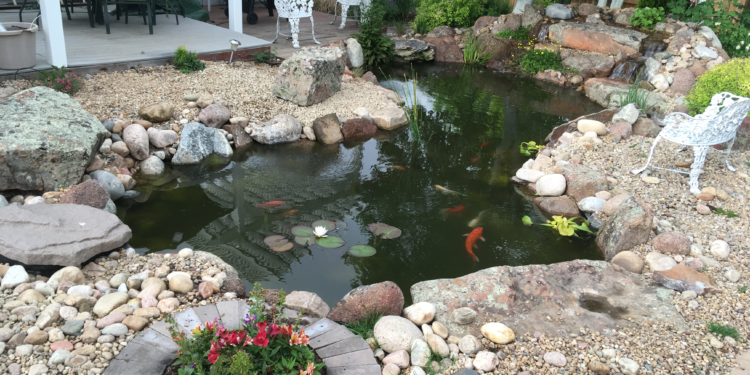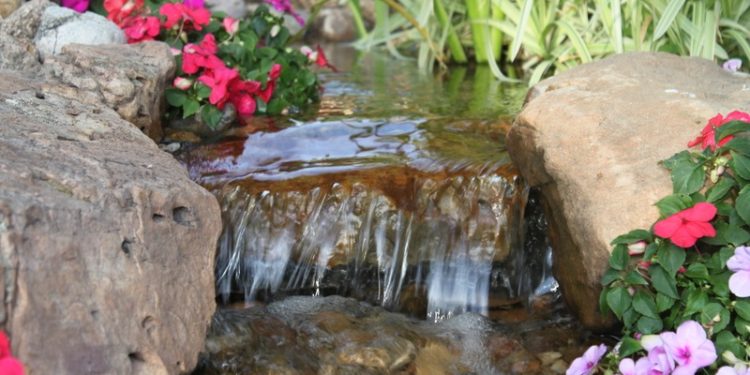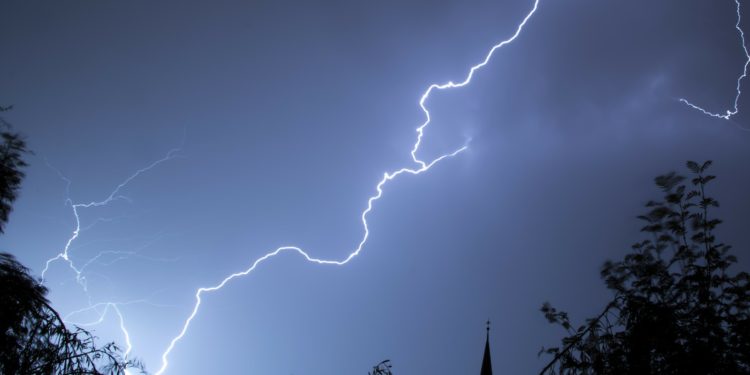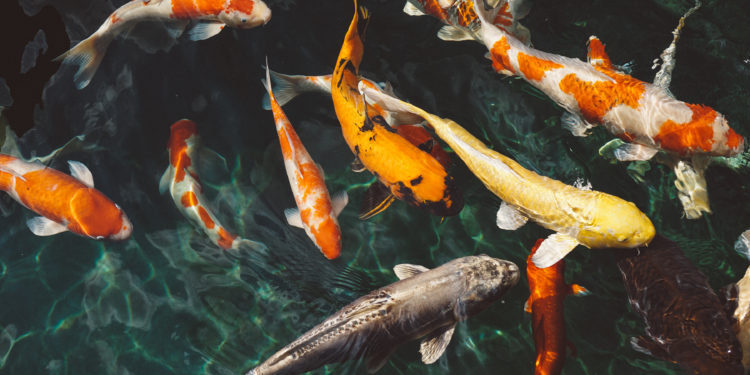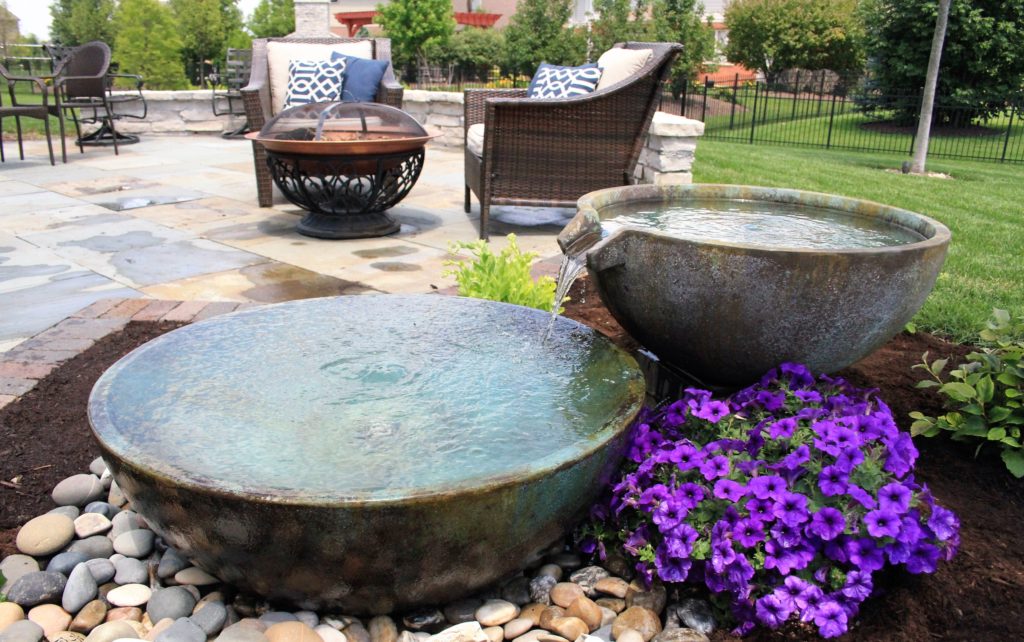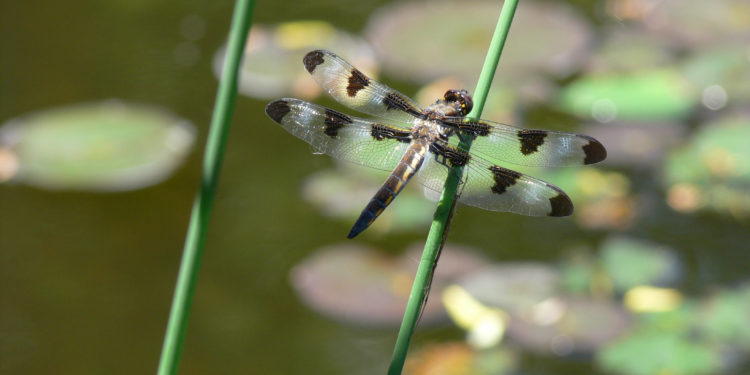Are you seeing green cloudiness in your garden pond? Here in Colorado we have had days on end of over 90° and several that hit 100°! Heat can green up a garden pond! Here’s 8 things to know about the heat and keeping your pond healthy:
1. Oxygen
Did you know that cold water can hold more dissolved oxygen that warm water can? That means that when the outside air temperature increases, it is more important that the pond have good aeration. Waterfalls and aerators help provide oxygen. Lack of oxygen can lead to slimy algae!
2. Circulation
Do you notice certain parts of the pond get more algae on the rocks or the water just doesn’t seem to move? That is a great place to add an aerator. Not only does it get more oxygen to the pond, but it is going to move that water.
3. Water temperature
Did you know that although koi can be healthy in water from 35° to 85°, the ideal temperature is between 65° and 75°? When the weather really heats up you may notice your fish spending more time at the bottom of the pond. It’s cooler there as the sun heats the top of the water.
4. Plants
Plants provide shade that can help keep the pond cool in the hot weather. Lilies, once they are established, are great for added shade. Submerged plants also add oxygen to the water. Floaters like water lettuce and water hyacinth are fantastic for filtration! If you have trouble with them floating into the skimmer, tie some fishing line around the roots and tie it in a circle. Then tie another piece of it around a rock (attaching it to the plant circle of fishing line) and put it wherever you like! Lettuce and hyacinth propagate like crazy, but don’t worry, here in Colorado they aren’t a nuisance because once a freeze comes they will die.
5. Sunburned fish?
Did you know that if fish don’t have somewhere to get out of the sun they can actually get a sunburn? YES! You might not be able to see it, but it can kill them. Most fish don’t get sunburned because they live in water deep enough that the sun’s rays can’t hurt them. But if you have a more shallow pond, you might need to consider adding shade. If you don’t have a shade tree or lots of lilies, try putting in a fish cave or adding a shade cloth over the pond that shades 1/2 the pond. You can even take a bucket or trash can and cut it in half lengthwise and put a rock on top to weigh it down to create a shady place for fish. Make it look good by covering it with rock.
6. Not too much fish food!
Feed your fish in the morning, rather than the heat of the afternoon. Overfeeding fish is a major cause of algae. In warmer weather, uneaten fish food decays faster and can be fodder for algae. Remember to feed fish only what they can eat in a few minutes.
7. Exposed Liner
Make sure you don’t have any liner exposed. The sun and heat can make it brittle, leading to leaks!
8. Evaporation
No matter the size of the pond, 2 to 3 inches of evaporation a week is normal. If you have an autofill that is attached to your sprinkler system, it will be brought up to the correct level each time that zone comes on. If you are turning off the sprinkler system for repairs, make sure you don’t forget about the pond. Either leave that zone on, or be prepared to fill it up by hand.
Want to read more about pond health? Click HERE for more topics.

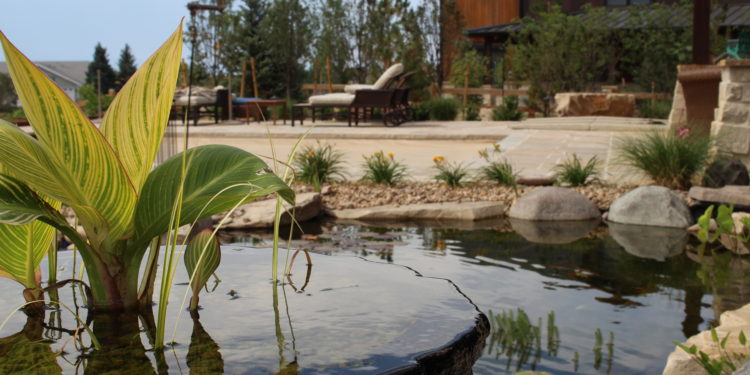
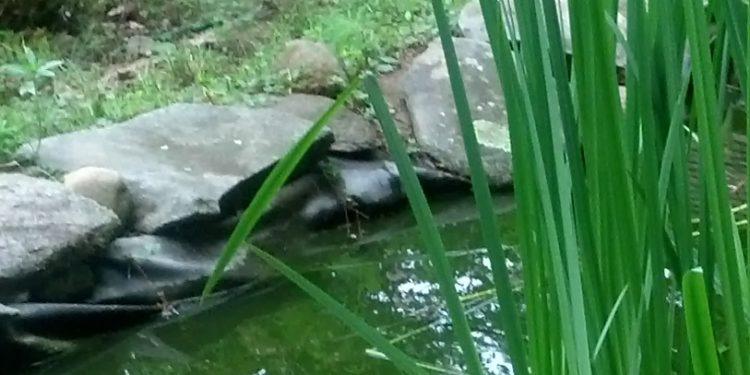
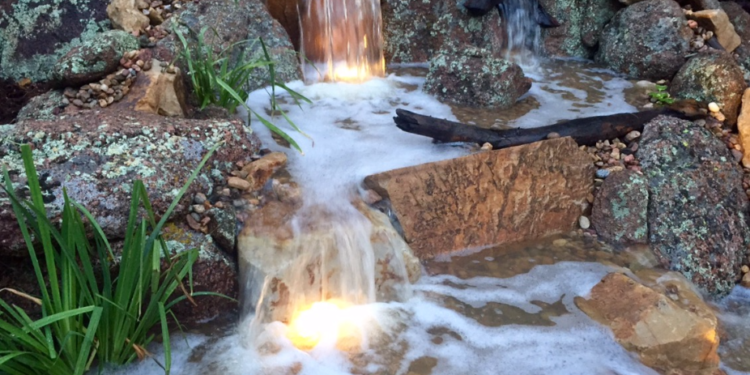
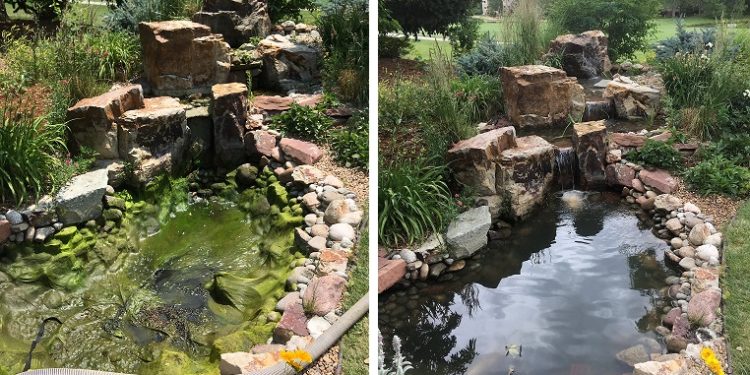

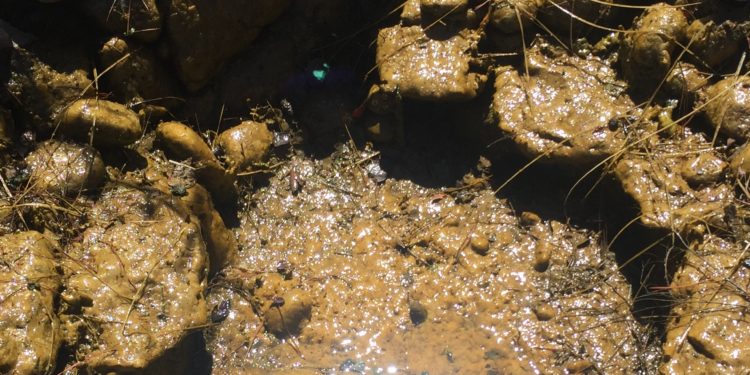
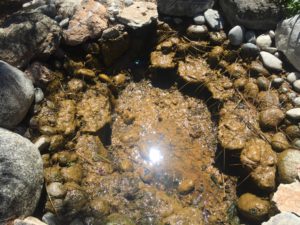 Algaecide works by removing the oxygen and suffocating the algae. It is also hard on plants, beneficial bacteria, and fish. Algae itself puts oxygen into the water. For that reason we recommend only treating ¼ of the pond at a time. When treating algae in a waterfall, turn it off and sprinkle dry algaecide onto the area, leaving it sitting without the waterfall on for 30 minutes.
Algaecide works by removing the oxygen and suffocating the algae. It is also hard on plants, beneficial bacteria, and fish. Algae itself puts oxygen into the water. For that reason we recommend only treating ¼ of the pond at a time. When treating algae in a waterfall, turn it off and sprinkle dry algaecide onto the area, leaving it sitting without the waterfall on for 30 minutes.